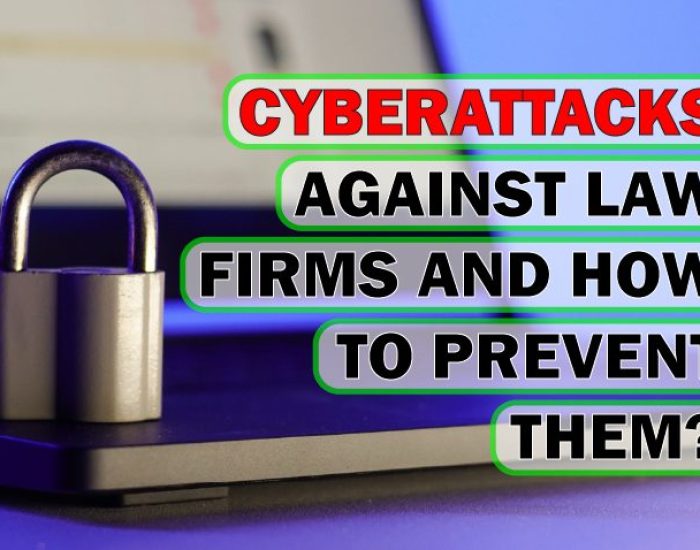How Do I Know I Have Ransomware?
Due to an influx of reports regarding malware viruses, most of us are aware of the impact these attacks can have on businesses. Nevertheless, most of us have experienced a malware attack of some kind at some point in our careers. Hopefully, the infection was only a minor inconvenience, but malware truly has the ability to jeopardize any critical data that organizations may be in charge of protecting.
-The key is to keep both you and your system safe.
The ransomware family is rapidly expanding, with 327 new families joining in 2017 and 127 in 2020. 68.5% of firms were hit by ransomware in 2021. Making this the highest figure reported in the last three years. The frequency of these cyberattacks is appalling; 2244 cases of cybercrime emerge daily, which translates into a crime approximately every thirty seconds. This activity is a highly organized operation that considers the use and importance of technology and data for companies and organizations worldwide.
Cybercriminals operate through intrusive software, and their work can be best understood by considering the methods they use to commit crimes. This requires a brief understanding of ransomware. This article will highlight the points that can help you understand ransomware and how to recognize it.
What is Ransomware?

Ransomware is a type of malware that denies access to computer files by encrypting them with the intent to extract a ransom. Ransomware is malware that blocks access to a computer system until a sum of money is paid. It’s most commonly used for financial gain but can also extort people or organizations.
Ransomware attacks have become more common over the past few years. These have evolved from malicious software to more sophisticated attacks aimed at specific targets like healthcare and government organizations.
Data is virtually wealth today, and whoever controls it has leverage over other entities in today’s ultra-competitive world. Therefore, getting hands on a company’s data or their online service provider systems is equivalent to bringing it to its knees. No amount is large enough for the company to bail itself out of the situation. Therefore, it’s necessary to take the right preventive measures before an actual disaster happens.
Ways to Identify Ransomware
So, how do you know whether or not a ransomware attack has invaded your company’s system? Well, the answer is both simple and complicated. Most cybercriminals are quite stealthy when it comes to breaking into your system, and once they’re in, the rest of the attack is done with ease. So, where does it all start? Click here to read types of ransomware 2023.
1. All Starts with Phishing
You might receive a seemingly normal email in which the sender poses as either a legitimate third-party company or co-worker and may attach a link that will require you to enter some private details. Once you enter your information, you have allowed illegal entry into your computer system.
2. The Emergence of Unexpected Network Scanners
The popping up of network scanning tools is another sign of a potential ransomware attack. This is how hackers hold as much information about your computer network as they can.
3. Illegitimate Intrusion Into Active Directory and Presence of Suspicious Software
Software’s are a clear-cut indication that your system has been invaded through Ransomware, as hackers predominantly use this mal-software to get hold of the Active Directories within your networks and gather information about various users.
4. A Splash Screen Might Say It All
Occasionally a splash screen may appear that blocks access to your system. This screen may also contain instructions provided by the hacker, which will tell you how to pay the ransom and get access to your data again.
5. Denial of Access to Your Data Files
In other cases, you may be unable to open your data files, indicating your data encryption. The computer might keep telling you that you do not have the required program to unlock your files, and this occurrence would be an anomaly as it was not there when you opened the same file either the other day or moments prior.
6. File Extensions Become Fishy
Your files may lack their usual file extensions like .jpeg, .exe, .pdf, etc. After the dot, it might display that it is “encrypted.” Alternatively, an extension might not be there, strengthening the possibility of a ransomware attack.
7. Your Files are Renamed
Similarly, your files may be renamed as ransomware encrypts them, throwing a major red flag on the field. Remember to check your files to see if they have been to direct your doubts about a malware attack.
8. Ransom Note Eliminates All Doubts
Eventually, you will receive a ransom note requiring you to pay the amount desired by the hacker. A most common method for you to receive this ransom note is usually through email.
9. A Dry Run of Small-Scale Test Attacks
Ransomware attacks often start with a test run that does not cause any damage to the organization yet. The attackers may want to “test” their code by installing it on a few machines without causing any damage. This allows them to see any network security that may be in place and whether or not they can bypass it. If the hackery succeeds at getting past the network security, they will launch a large-scale attack that will be far more damaging.
Conclusion
You are never entirely safe from ransomware when using a computer. Ransomware can cause devastating consequences to an infected system and damage your company from the inside out.
Maintaining a safe system is not straightforward, but with the proper care, it is possible. Ransomware attacks are difficult to avoid, but you can easily control them with robust security measures.
Protected Harbor has built-in detections based on industry best practices and is continuously updated to provide you with the most up-to-date protection available. With various notification options, you can be sure that the people who need to know about these events will be notified. To get the most out of these features, you might also choose to invest in monitoring services as a precaution for your company to keep track of every device on your network and collect data about its activities.
You are more likely to catch a virus within its early stages before it can infect the rest of your system and cause continuous damage. If you have a dedicated IT team on the job to help detect any potential system anomalies, you are in the right direction. Contact Protected Harbor today for a free pen-testing and IT Audit.






